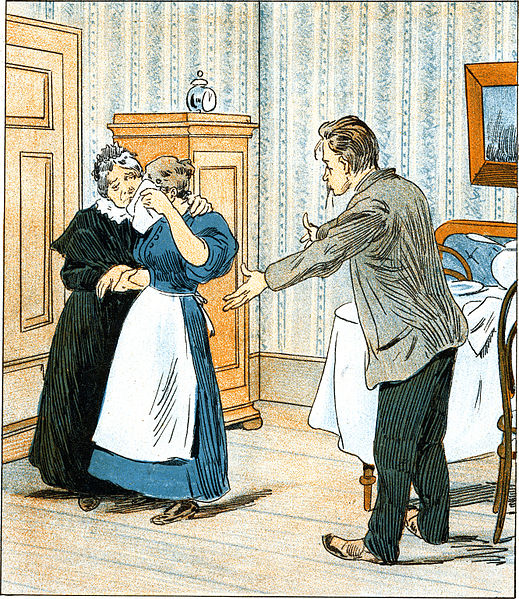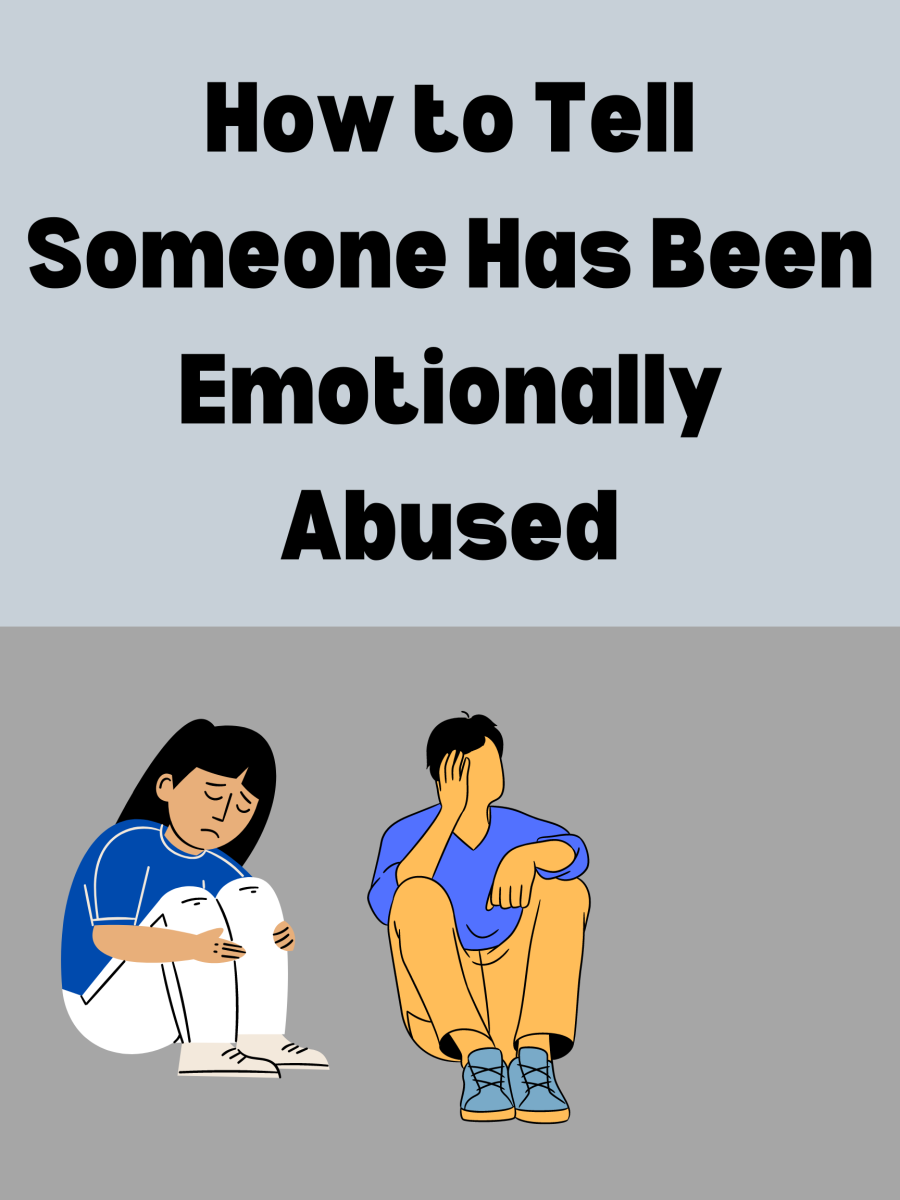Emotional Differences Between Men and Women - Stress Responses
Stress in Men and Women Causes Different Responses

Are there Different Responses to Stress in Men and Women?
Biologically there are obvious gender differences.
Are there difference responses to stress in men and women ?
The human body is designed to react to stressful situations with the flight or fight response. Stress in men and women have the same biological reaction. As far recently as 1995, previous studies on stress mostly used men, only surveying women about 17% of the time. Some researchers rationalized the lack of women representation because they believed there would be more fluctuations due to a woman’s hormone levels from their menstrual cycles
.From Adolescence on There on Differences in Stress in Men and Women
Some researchers now believe women have a unique stress response that men do not necessarily possess called “tend and befriend”.
A researcher named Shelley Taylor believes that females have a different investment in parenting than men. Females, while pregnant, nursing, or taking care of their children, would not be able to run away when threatened. You can read the scholarly article at this website: http://scholar.harvard.edu/sites/scholar.iq.harvard.edu/files/marianabockarova/files/tend-and-befriend.pdf
The tend and befriend response is a reaction to tend to their offspring and befriend others around them so their liklihood of survival is increased. It is a protective response for herself and her offspring.
Studies, even among women who are abused, show that many of these women do not have connections within their community.
Stress in men and women has shown difference reactions near adolescence. It is not seen in young children beause they do no have sex hormones yet. Studies have shown that adolescent girls rely on support networks when they feel stressed.
Adolescent boys tend to engage in physical releases to deal with their stress. Testerone has been shown to increase in males when they are faced with stress.
There is a positive correlation between testerone and hostility and testerone and agression. This positive correlation means that there are higher levels of testerone in aggressive and hostile males.
Stress in Men and Women - Are There Differences?
Testerone and Stress and Aggression
As we look at the tend and befriend response in females, it does not preclude the idea that women can have hostility too, or that there is no such thing as female aggression.
The belief is that it occurs in different pathways in females, not in the testerone pathway (because all females do have some testerone, just like males have some estrogen).
In studies with rats, females only showed aggression if they felt threatened and it required them to defend themselves.
When higher levels of testosterone exist, there are higher levels of behavior and aggression, whether they are male or female. Researchers have found that women in prison who were convicted of violent crimes had higher levels of testosterone levels in their blood plasma and in their saliva.
Oxytocin May Counteract the Effect of Stress
It is the sympathetic nervous system (SNS) that activates the flight or fight response. When the body is set in motion by stressors, a series of chemical releases pours through our system. Oxytocin is thought to counteract the effects of stress.
In studying stress in men and women, researchers have established that the sympathetic automomic nervous system becomes activated. This causes the release of oxytocin, and vasopressin, CRF (corticotrophin-releasing factor) from the hypothalamus.
Both males and females produce oxytocin, but females have it in greater amounts. Oxytocin is associated with labor, lactation and bonding.
Oxytocin decreases blood pressure, and decreases cortisol. Cortisol is related to the fight or flight response. It is theorized that females release oxytocin in response to stress, which increases the infant and mother attachment so that biologically we would not abandon our infants at a time of stress.
The oxytocin and estrogen relationship in females may make a women feel more relaxed compared to the male reaction to stress, being more aggressive. This is the basis of the tend and befriend response in females.
Tend and Befriend - The Difference of Stress in Men and Women
Response to Stress in Men and Women Has Evolutionary Beginnings
Nursing mothers have higher levels of oxytocin than non nursing mothers. There is the possibility that oxytocin may help calm infants. In 1989, a study was done with mothers and fathers who had stressful days at work.
Through questionnaires, it was found that fathers who had a stressful day were likely to withdraw from their families when they got home from work.
Females tended to take on more caretaking and nurturing activities when they got home from a stressful day compared to the days that were not as stressful. The male fight or flight response is associated with the release of vasopressin.
Vasopressin is enhanced by the presence of testosterone and make males take on a more defensive behavior. Structurally, vasopressin and oxytocin are similar, but vasopressin increases agression in males.
There are evolutionary benefits to the tend and befriend nature.
Survival is greater when one is in a group, than on their own. In primitive times, the male fight or flight response was probably designed to allow the male to run away from the threat. If he couldn’t run, he would fight, in order to protect himself.
Females would not be able to flee easily, while they are caring for their offspring.
Females would not be able to fight as easily, as they would make their children more vulnerable to being attacked, while they try to fend off the threat.
The tend and befreind female reponse is an evolutionary solution to this situation. Forming a bond with others, would ensure that their offspring would be cared for, and that they would get help in defending the threat. This would increase the liklihood of the survival for themselves and their offspring.
Stress in Men and Women - "Tend and Befriend"
Men still have the same investment and desire to ensure the safety of their offspring as women, but stress in men and women make stress hormones work differently, probably because of the more major nurturing role, the female plays.
From research such as this, stress in men and women may have a different responses, due mainly to our evolutionary survival.
In stressful situations, women tend to their offspring to protect them and also find relief in the presence of other women.
The main source of this stress response is found in the hormone oxytocin, which is generally associated with labor and lactation.
As women engage in the tend-and-befriend behavior, their levels of oxytocin increase, and reduce the amount of stress experienced.
Stress in Men and Women Releases Different Hormones
From research such as this, stress in men and women may have a different responses, due mainly to our evolutionary survival.
In stressful situations, women tend to their offspring to protect them and also find relief in the presence of other women. The main source of this stress response is found in the hormone oxytocin, which is generally associated with labor and lactation.
As women engage in the tend-and-befriend behavior, their levels of oxytocin increase, and reduce the amount of stress experienced.
There is some more research that needs to be done. Science is not sure what role individual personalities play in an individual’ response to stress. Some personality traits such as extroversion and openness, adapt well to getting along with others.
Women who have personality traits such as these and experience an increase in oxytocin through pregnancy are more likely to engage in befriending and more willing to create bonding experiences with other women.
But what about women who are introverted? How do they benefit from the friend and befriend response? Stress in men and women release hormones that create reactions to the real or perceived threats.
People respond differently to stress, but biologically, women may innately respond differently to stress than men do. Evolution has played a part in the reaction to stress in men and women. It may be due large part to survical of the fittest, and survival of our young.
A mother’s need to protect her children may naturally be different than a father’s. This may very well be the basis why the response to stress in men and women is different.
Stress in Men and Women - Give Us Your Opinion
Do You Think Women React Differently Than Men to Stress?
more articles by toknowinfo
- Making Mondays Better - Moods and the Day of the We...
Motivating ourselves to start the work week is one of the most difficult things to do. There are many factors that may affect our sluggish start to the week and our mood. What is memory bias,the weekend effect and how is our mood affected by the days - Milestones and Meanings - Seeking Inspiration fro...
When I started many hubs ago, and I read about other people writing their 100th hub, I thought I won’t create something about my 100th hub. Even 2 hubs ago, I thought about the topics I will write about next, and writing about my 100th hub wasn't... - Psychologyisms: How to have a Rich and Full Life -Th...
Our basic needs start from the desires of the heart and mind - having our health, having people who care about us in our lives, to love and be loved, to listen to music, and the sounds of nature, to laugh, to know we have done our best, to watch... - Health and Emotional Well Being Checkup
Emotions are always a part of us, and affect how we think, feel, and act in various situations. Give yourself a periodic emotional health checkup What is in this article? · emotions and moods · boost your emotional well being ·... - Understanding Hiccups and What Will Help Get Rid of ...
The word hiccup is an onomatopoeia. It describes the sound we hear. Hiccups are a result of the diaphragm moving involuntarily, and the larynx contracting causing air to get trapped. Very often minor stomach disturbances are the cause of... - How to Use Color Therapy to Relieve Stress
Color affects our moods, evoking powerful feelings on a conscious and unconscious level. From the colors of clothes we choose to wear to the shades that decorate our home, colors have a powerful impact on what we feel and the choices we make. From... - Peoplality: Where Does Personality Come From? - Disc...
Where exactly personality comes from still has some mystery to it. Genetics, environment, experiences, all play a big role in who we are, in our behavior and how we react to situations. Science has long studied how biology and genetics influence our.









